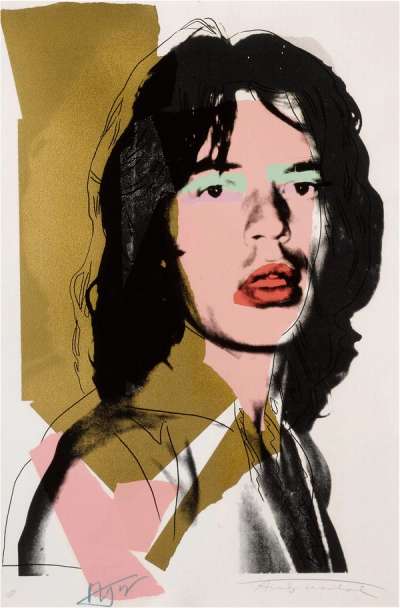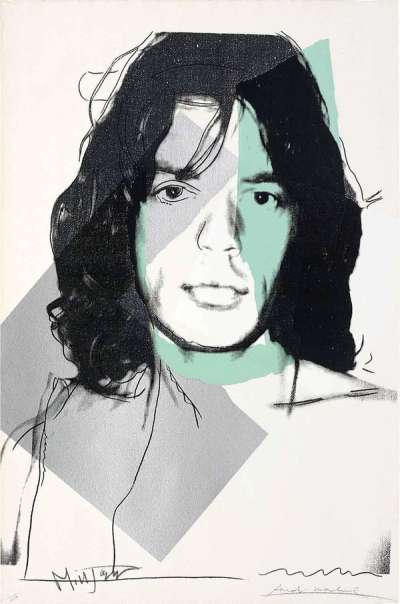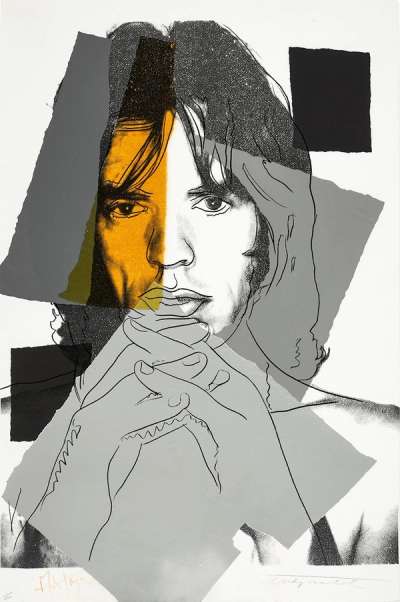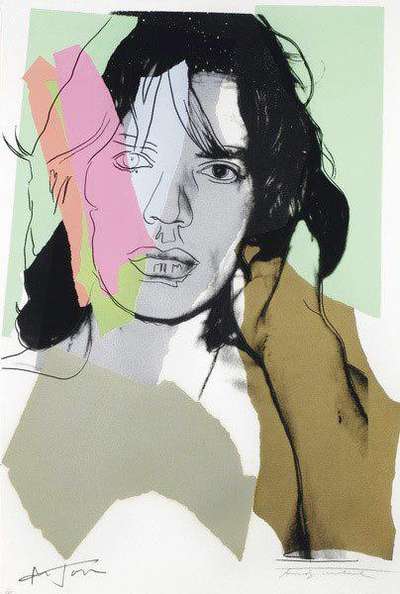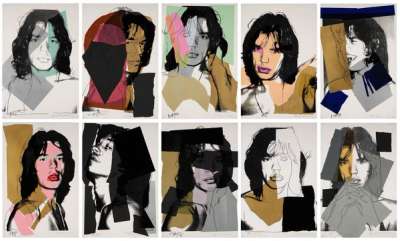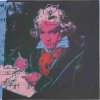Mick
Jagger
Ever drawn to celebrity sex symbols, Andy Warhol turned his hand to Mick Jagger, Rolling Stones’ frontman, in 1975. Warhol portrays Jagger in multiple poses and evocative shades of red and pink that suggestively highlight Jagger’s reputation as a modern-day Adonis.
Andy Warhol Mick Jagger for sale
Sell Your Art
with Us
with Us
Join Our Network of Collectors. Buy, Sell and Track Demand
Meaning & Analysis
Fixated on sex and celebrity, it was only a matter of time before Warhol captured rock legend and Rolling Stones frontman Mick Jagger’s likeness. He was consistently drawn to the representation of figures in the public eye, from his earliest screen prints ofElizabeth Taylor and Marilyn Monroe to his later representations of Vladimir Lenin. One of Warhol’s most recognisable series of prints is that of the British rock star and lead singer of the Rolling Stones, Mick Jagger. This portfolio of 10 screen prints produced in 1975 is evocative of the celebrity status of subject and artist, both of whom were at their height of fame at this time.
Warhol met Jagger in 1963 during the Rolling Stones’ first tour to the United States, before the band reached its height of international popularity. The pair formed a friendship and professional relationship that became the foundation for several years of artistic collaboration. Most famously, Warhol was commissioned to design the iconic cover for the Rolling Stones 1971 album Sticky Fingers, an image that became renowned for its provocativeness and expressivity of 1970s rock and roll. By the mid ’70s Jagger’s fame was at its peak, leading Warhol to pursue the rock star as the subject of his next series of acclaimed screen prints. In the summer of 1975, whilst Jagger and his wife were renting Warhol’s home in Long Island, the artist took the opportunity to photograph Jagger, capturing a variety of expressive images that would form the basis of his next portfolio.
This process marked an important stylistic turning point in Warhol’s artistic career as he began to more frequently photograph his subjects, as opposed to relying on the pre-existing imagery used for his earlier portfolios. Warhol’s 1975 photographs of Jagger capture the rock star bare-chested in a range of emotive poses. These images were projected and used to create stylised line drawings, then layered with solid areas of colour to create intersecting lines and shapes, sometimes obscuring the singer’s face. Mick Jagger 143 and Mick Jagger 141 illustrate Warhol’s playful use of colour with opaque blocks of red and pink to highlight Jagger’s famous features and intensify his sultry gaze. Warhol’s collage technique is again symptomatic of this shift in aesthetic, creating more expressive imagery than the screen prints of his earlier career. This increasingly abstract style also demonstrates Warhol’s interest in the use of photography and collage to create a new conceptual framework, one that is comparable to the more non-representational art that was emerging in the 1970s.

